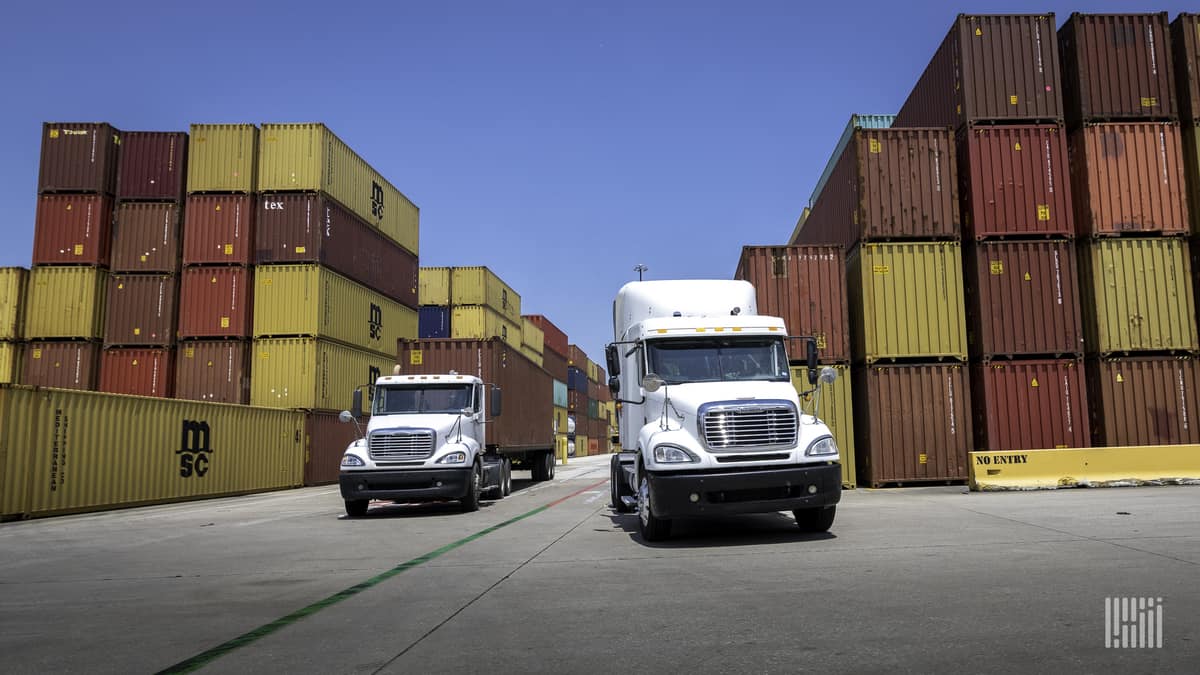
Current congestion at the Port of Los Angeles is unprecedented, with an all-time monthly record of 980,729 twenty-foot equivalent units (TEUs) set in October. The Wall Street Journal reported China exports were up 22% in November, with a 46% increase in shipments to the U.S. Congestion is hitting East Coast ports, too. October’s container volumes at the Port of Savannah reached a record high of 464,095 TEUs.
To ease congestion, Port of LA has implemented a free Return Signal platform, providing visibility to truckers as to when and where they can return empty containers, in hopes of creating more drop-and-hook scenarios. But Brian Kempisty, CEO of Port X Logistics, doesn’t see this as a viable short-term solution, especially when the unions resist automation.
Kempisty was featured on Monday’s WHAT THE TRUCK?!? to address the realities of congestion on the ground and in real time for human workers — how it’s so much more than a longer wait time.
“We send a driver to a terminal,” said Kempisty. “He’s in line for five hours. His appointment expires. He gets to the speaker. They turn him away, and we need to make another appointment. He may have had an empty that he needed to return. It’s a ripple effect.”
The drivers in line might also face additional COVID-19 protocols, as well as a shortage of chassis. Port of LA recently reported a shortage of 239 chassis. In order to get paid, drivers must explain the additional charges and extenuating circumstances to the beneficial cargo owner (BCO), the non-vessel operating common carrier (NVOCC) or the freight forwarder — and that work requires additional help.
“We’ve had to add on logistics support staff for appointments, to take pictures of the long lines, to provide evidence of why there’s waiting time or why there’s dry runs,” he said.
For a typical container, Kempisty has seen a driver have to go to the port three or four times, so this means three or four times as much work for the driver, dispatcher and customer service workers.
For Port X Logistics, it’s all about planning. Its logistic solution provides drayage, transloading and trucking to expedite containerized cargo. By allocating drivers ahead of time, they must receive container and/or delivery numbers five to seven days in advance.
“We’re scheduling those drivers, dock space and over-the-road drivers to make sure that for somebody in Chicago that needs their hairdryers picked up, drayed, transloaded and trucked 2,000 miles in two days, we can pull that off. If you wait until the last minute, this congestion will just kill you.”
By equipping its drivers with the Turvo Driver App, both the customer and NVOCCs/freight forwarders know when drivers are at the ports and in line, which is helpful during times of congestion.
While COVID-19 has driven massive growth in technology utilization and adoption, owner-operators, who make up 96% of the Port of Los Angeles drayage market, remain skeptical. That might be making their daily lives — and ability to receive quick payment — needlessly difficult.
“We have to show owner-operators how adopting this solution is going to be a time saver. Although we’re making them do additional steps like take and upload pictures, they’re going to be getting paid much more easily.”
Kempisty fears that by the end of 2021, the industry will return to the normal find-what-costs-the-least mode of operating. He hopes the industry will learn to keep a good plan, move past spreadsheets and communicate more effectively with the end customer.
“The shipper needs to be more aware of what is going on and not just be stepping over dollars to pick up nickels,” said Kempisty. “They think they’re going to save and then there’s demurrage charges or unintended consequences, or they can’t fulfill orders or production lines go down. That’s that vicious cycle that we see going from cheap to diversified and effective.”










